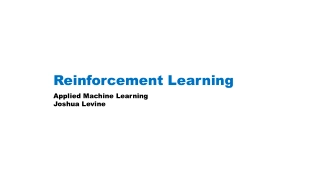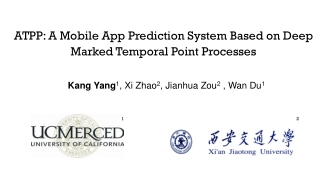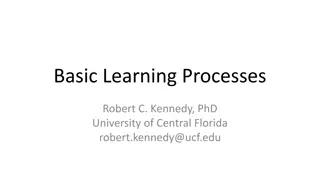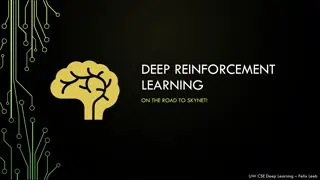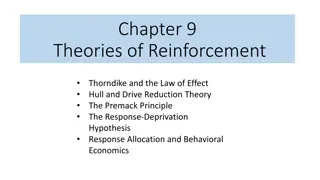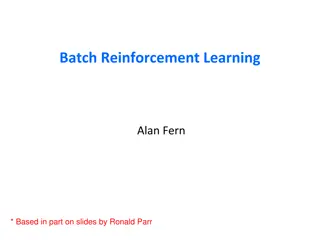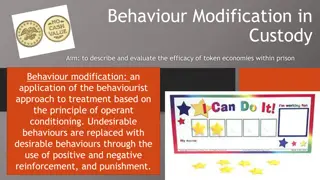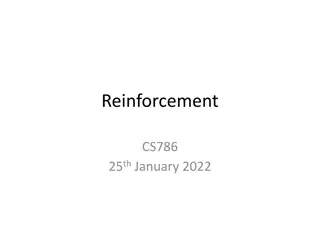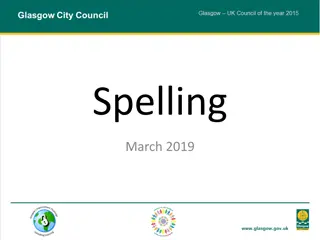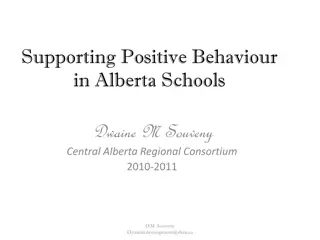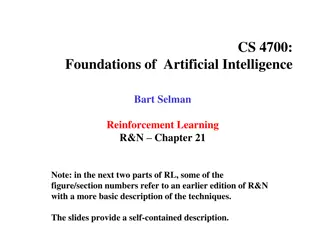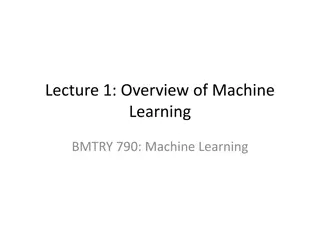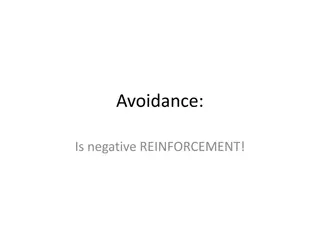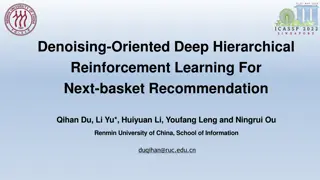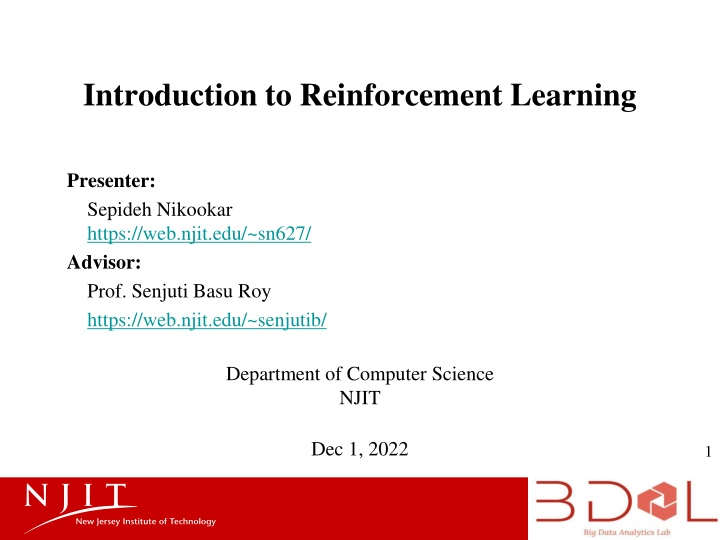
Reinforcement Learning: Applications, Examples, and Terminology
"Discover the world of reinforcement learning through examples, applications, and key terminologies. Explore how intelligent agents interact with the environment, learn through actions, and make decisions for long-term goals. Uncover the differences between supervised, unsupervised, and reinforcement learning methods, and grasp the concepts of agents, states, rewards, policies, and values in this fascinating field of machine learning."
Download Presentation

Please find below an Image/Link to download the presentation.
The content on the website is provided AS IS for your information and personal use only. It may not be sold, licensed, or shared on other websites without obtaining consent from the author. If you encounter any issues during the download, it is possible that the publisher has removed the file from their server.
You are allowed to download the files provided on this website for personal or commercial use, subject to the condition that they are used lawfully. All files are the property of their respective owners.
The content on the website is provided AS IS for your information and personal use only. It may not be sold, licensed, or shared on other websites without obtaining consent from the author.
E N D
Presentation Transcript
Introduction to Reinforcement Learning Presenter: Sepideh Nikookar https://web.njit.edu/~sn627/ Advisor: Prof. Senjuti Basu Roy https://web.njit.edu/~senjutib/ Department of Computer Science NJIT Dec 1, 2022 1
What is Reinforcement Learning? Reinforcement learning is a type of machine learning method where an intelligent agent interacts with the environment and learns to act within that. For each good action, the agent gets positive feedback, and for each bad action, the agent gets negative feedback or penalty. RL solves a specific type of problem where decision making is sequential, and the goal is long-term. The agent continues doing following three things: Take action, change state/remain in the same state get feedback By doing these actions, he learns and explores the environment. 2
Reinforcement Learning Example An example of a state could be your cat sitting, and you use a specific word for cat to walk. Your cat reacts by performing an action transition from one state (sitting) to another state (walking). The reaction of your cat is an action, and the policy is a method of selecting an action given a state in expectation of better outcomes. After the transition, cat may get a reward or penalty in return. 3
Supervised vs. Unsupervised vs. Reinforcement Learning Criteria Supervised ML Unsupervised ML Reinforcement ML Learns by using labelled data Trained using unlabelled data without any guidance. Works on interacting with the environment Definition Regression and classification Exploitation or Exploration Type of problems Association and Clustering Linear Regression, Logistic Regression, SVM, KNN etc. K Means, C Means, Apriori Q Learning, SARSA Algorithms Aim Calculate outcomes Discover underlying patterns Learn a series of action Risk Evaluation, Forecast Sales Recommendation System, Anomaly Detection Self Driving Cars, Gaming, Healthcare Application 5
Term Used in Reinforcement Learning Agent An entity that can perceive/explore the environment and act upon it. Environment A situation in which an agent is present or surrounded by. Action Actions are the moves taken by an agent within the environment. State is a situation returned by the environment after each action taken by the agent. State A feedback returned to the agent from the environment to evaluate the action of the agent. Reward Policy is a strategy applied by the agent for the next action based on the current state. Policy It is expected long-term retuned with the discount factor and opposite to the short-term reward. Value 6
Elements of Reinforcement Learning There are four main elements of Reinforcement Learning, which are given below 1. Policy: A policy can be defined as a way how an agent behaves at a given time. It maps the perceived states of the environment to the actions taken on those states. The policy-based approach has mainly two types of policy: Deterministic: The same action is produced by the policy ( ) at any state. Stochastic: In this policy, probability determines the produced action. 2. Reward Signal: The goal of RL is defined by the reward signal. Reward signals are given according to the good and bad actions taken by the learning agent. The main objective is to maximize the total number of rewards for good actions. 3. Value Function: Gives information about how good the situation and action are and how much reward an agent can expect. 4. Model: Mimics the behavior of the environment. 7
Reinforcement Learning Categories Value Based No Policy Value Function Policy Based Policy No Value Function Actor Critic Policy Value Function Model Free Policy and/or Value Function No Model Model Based Policy and/or Value Function Model 8
State Representation We can represent the agent state using the Markov State that contains all the required information from the history. The State ?? is Markov state if it follows the given condition: ? ??+1 ??] = P s?+1 ?1,s2, ,st] The Markov state follows the Markov property, which says that the future is independent of the past and can only be defined with the present. The RL works on fully observable environments, where the agent can observe the environment and act for the new state. The complete process is known as Markov Decision process. 9
Markov Decision Process Markov Decision Process or MDP, is used to formalize the Reinforcement Learning problems. MDP contains a tuple of four elements (?,?,??,??): A set of finite States ? A set of finite Actions ? Rewards received after transitioning from state ? to state ? , due to action ?. Probability ??. 10
Reinforcement Learning Algorithms RL algorithms are mainly used in AI applications and gaming applications. The main used algorithm is: Q-Learning: Q-learning is a popular model-free Reinforcement Learning algorithm based on the Bellman equation ? ? = max ? (? ?,? + ??(? )). The main objective of Q-learning is to learn the policy which can inform the agent that what actions should be taken for maximizing the reward under what circumstances. It is an off-policy RL that attempts to find the best action to take at a current state. ??????,?? = ? ??,?? + ? (?? + ? ???? ?(??+1,?) ?(??,??)) 11
Please open your Jupyter Notebook for the hands-on experience . 12

